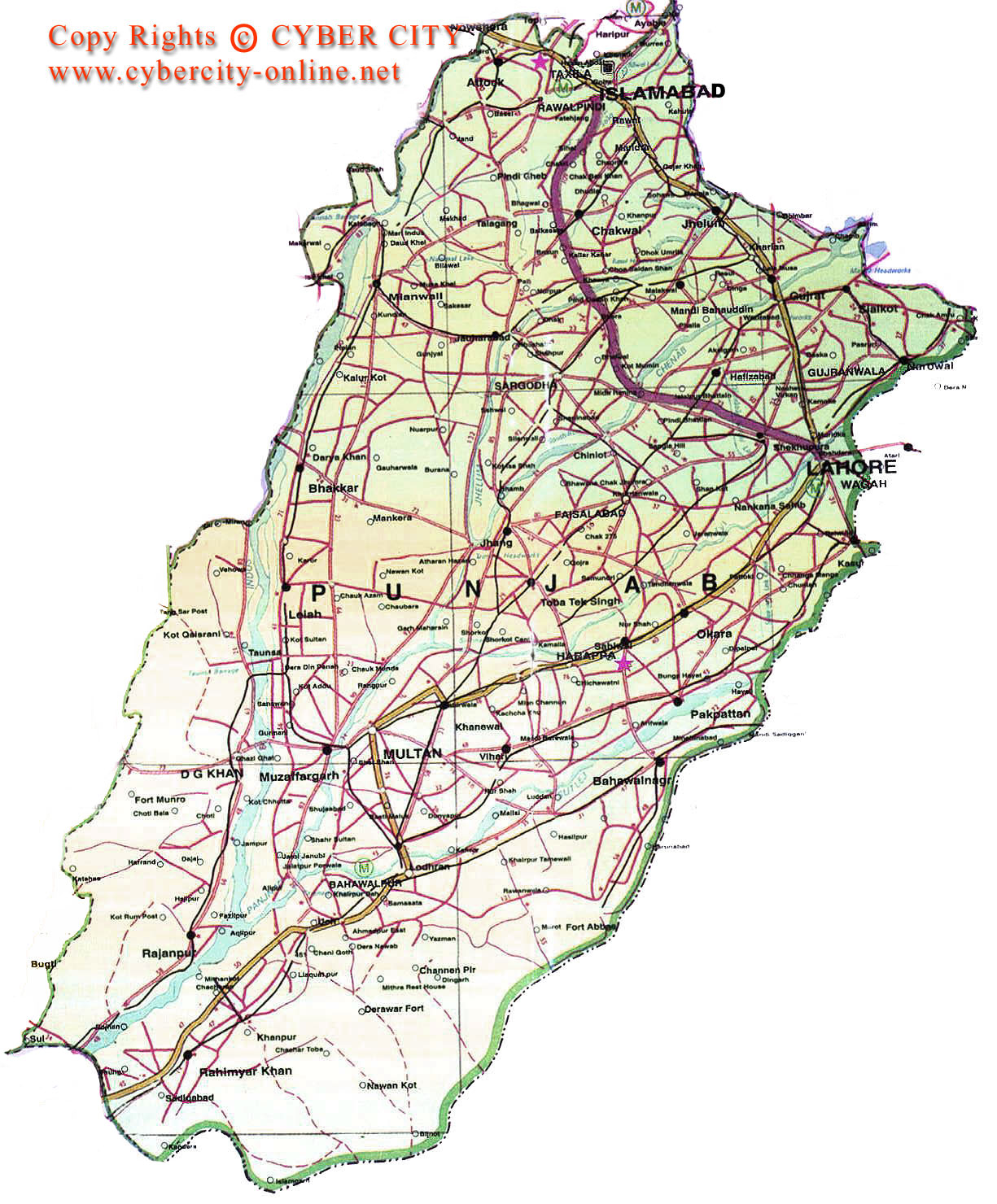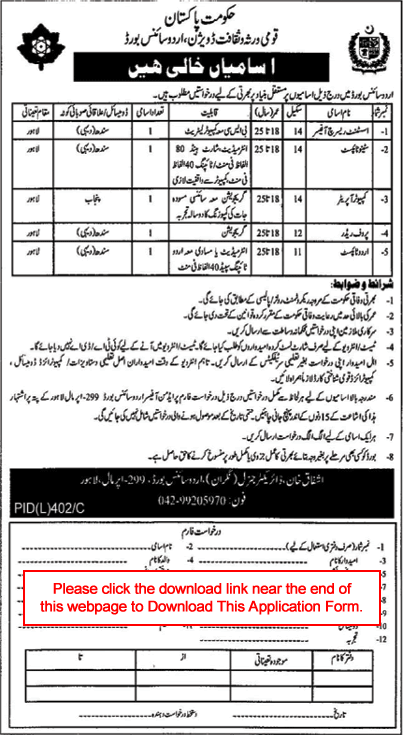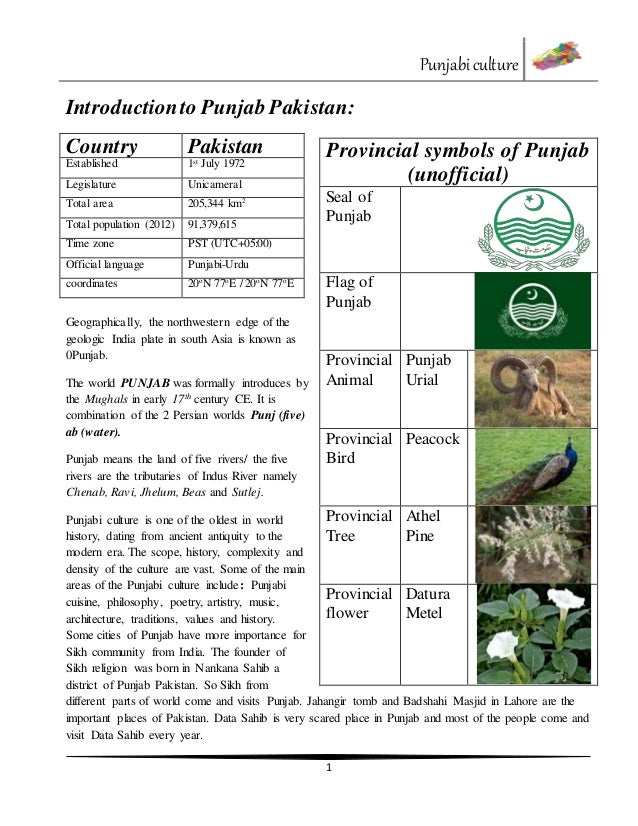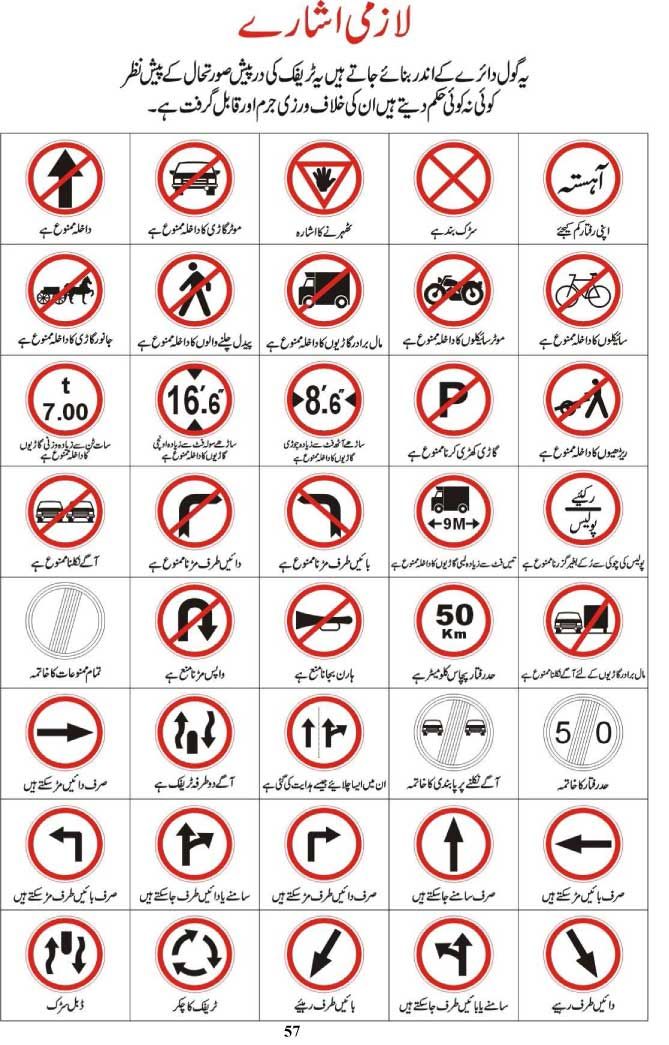Punjabi language, Punjabi also spelled Panjabi, one of the most widely spoken Indo-Aryan languages. The old British spelling "Punjabi" remains in more common general usage than the academically precise "Panjabi." In the early 21st century there were about 30 million speakers of Punjabi in India. It is the official language of the Indian state of Punjab and is one of the languages recognized by the Indian constitution. In Pakistan Punjabi is spoken by some 70 million speakers, mostly in Punjab province, but official status at both the national and the provincial level is reserved for Urdu.
In September 2015, a case was filed in Supreme Court of Pakistan against Government of Punjab, Pakistan as it did not take any step to implement the Punjabi language in the province. Additionally, several thousand Punjabis gather in Lahore every year on International Mother Language Day. Thinktanks, political organisations, cultural projects, and individuals also demand authorities at the national and provincial level to promote the use of the language in the public and official spheres. When Pakistan was created in 1947, despite Punjabi being the majority language in West Pakistan and Bengali the majority in East Pakistan and Pakistan as whole, English and Urdu were chosen as the national languages. The selection of Urdu was due to its association with South Asian Muslim nationalism and because the leaders of the new nation wanted a unifying national language instead of promoting one ethnic group's language over another.
Broadcasting in Punjabi language by Pakistan Broadcasting Corporation decreased on TV and radio after 1947. Article 251 of the Constitution of Pakistan declares that these two languages would be the only official languages at the national level, while provincial governments would be allowed to make provisions for the use of other languages. However, in the 1950s the constitution was amended to include the Bengali language. Eventually, Punjabi was granted status as a provincial language in Punjab Province, while the Sindhi language was given official status in 1972 after 1972 Language violence in Sindh.
Punjab is the most densely populated province of Pakistan and therefore a majority of the population lives there and speaks Punjabi. I have never in my entire life seen any Sindhi, any Balochi, or any Pashtun criticizing Urdu or its native speakers. We cannot make Punjabi the national language just because majority of the population speaks it.
Regarding patriotism, I want to ask the author as to why people in Punjab including Lahore and Islamabad judge you because of your non ability to speak fluent Punjabi. Is it true that people belonging to the Urdu speaking community of Sindhi community or Pashtun are not high class Pakistanis like Punjabis. Please stop creating hatred among people on the basis of language. Although Punjabi was the majority language in West Pakistan when Pakistan was created in 1947, and Bengali the majority in East Pakistan and Pakistan as a whole, English and Urdu were chosen as the official languages. Eventually, Punjabi was granted status as a provincial language in Punjab Province. In India, Punjabi is one of the 22 scheduled languages of India.
It is the first official language of the Indian State of Punjab. Punjabi also has second language official status in Delhi along with Urdu, and in Haryana. In Pakistan, no regional ethnic language has been granted official status at the national level, and as such Punjabi is not an official language at the national level, even though it is the most spoken language in Pakistan.
It is, however, the official provincial language of Punjab, Pakistan, the second largest and the most populous province of Pakistan as well as in Islamabad Capital Territory. The only two official languages in Pakistan are Urdu and English. Urdu belongs to the Indo-Iranian language family, which is spread all across Central Asia, South, West, and Southeast Asia. It is spoken by close to 250 million native speakers and is learned by over 100 million more as a second language. It is the official language of Pakistan and one of two official languages in India.
Urdu as a language evolved during the last days of the Mughal rule in India. Persian was the official language of the Mughal emperors along with Turkic and Arabic. At that time, the northern part of India was the centre of rule and knowledge, particularly Delhi and its surrounding areas, including today's Bihar and Uttar Pradesh. Due to the interaction of local population and the ruling Persian-Turkic-speaking Muslim elite, a new language evolved and was known as Hindustani. So, Urdu became one of the signs of era of prosperity and power of the Muslims in this sub-continent.
In India it is the official language of Punjab state and one of the 15 official languages recognized by the Indian constitution. It is also spoken in the neighboring states of Haryana and Himachal Pradesh. In addition about 25 percent of the people living in the New Delhi metropolitan area speak punjabi in everyday life. All told, there are about 25 million speakers in India. Although Urdu is the official national language, it is spoken as a native tongue by only 8 percent of the population.
People who speak Urdu as their native language generally identify themselves as muhajirs. A large number of people from educated backgrounds speak Urdu, as opposed to their natal languages, in their homes, usually to help their children master it. Despite Punjabi's rich literary history, it was not until 1947 that it would be recognised as an official language. Previous governments in the area of the Punjab had favoured Persian, Hindustani, or even earlier standardised versions of local registers as the language of the court or government.
After the annexation of the Sikh Empire by the British East India Company following the Second Anglo-Sikh War in 1849, the British policy of establishing a uniform language for administration was expanded into the Punjab. The British Empire employed Urdu in its administration of North-Central and Northwestern India, while in the North-East of India, Bengali language was used as the language of administration. Despite its lack of official sanction, the Punjabi language continued to flourish as an instrument of cultural production, with rich literary traditions continuing until modern times. The Sikh religion, with its Gurmukhi script, played a special role in standardising and providing education in the language via Gurdwaras, while writers of all religions continued to produce poetry, prose, and literature in the language.
Punjabi is the provincial language of Punjab province in Pakistan and it has not given official status at national level. In India, Punjabi is spoken by 31.1 million people and has official status in the state of Punjab. The language is spoken among a significant overseas diaspora, particularly in Canada, the United States and the United Kingdom. Punjabi is a language spoken by millions of people in over ten countries, mainly in the northern region of South Asia.
It is one of the national languages of India and Afghanistan as well as, to a lesser extent, Pakistan and Nepal. The first evidence of Punjabi dates back to the 5th century BC, making it one of the oldest living languages on Earth. Almost half of Punjabis speak their native language, most notably those who live in India, but there are still plenty left who speak nothing else but Punjabi. Punjabi belongs to the Indo-Aryan language family, which is spread all across India, Pakistan, and Southeast Asia. It is spoken by close to 90 million native speakers and is learned by over 10 million more as a second language. It is one of the 22 official languages in Pakistan and one of the official languages in India, as well as having a large number of native speakers in Bangladesh and Nepal.
SOON after the partition of the subcontinent into India and Pakistan, especially after India had taken Hindi as the official language, central leaders of Pakistan wanted Urdu to be the sole state language of entire Pakistan. This is a decision which had been strongly opposed by the people of East Pakistan. With the utmost surprise of the history of the language movement, Urdu itself has never been the most widely spoken language of Pakistan till now.
During the movement, it was the language of only 7 per cent of the total population of Pakistan while Bangla accounted for 54 per cent.The mother tongue of most of the West Pakistanis were Panjabi, Pashtu, Sindhi, Balochi and so on. I am willing to accept this novel theory because I firmly believe it has been formulated with the noble motive to enhance the worth of our national language which badly needs such boosts. However, the only problem with it is that it is next to impossible to find any facts or historical evidence to substantiate it. If you consult the latest census report, you will find out that only less than 5 per cent of people living in the Punjab use Urdu as their mother tongue.
Now the mother tongue of a territory is that which is its 'natural' language and is spoken by the vast majority of people inhabiting it. This is the only definition of an area's mother tongue and it flies in the face of the claim about Urdu being the mother tongue of the Punjab. Saraiki (Sarā'īkī, also spelt Siraiki, or less often Seraiki) is an Indo-Aryan language of the Lahnda group, spoken in the south-western half of the province of Punjab.
Saraiki is to a high degree mutually intelligible with Standard Punjabi and shares with it a large portion of its vocabulary and morphology. At the same time in its phonology it is radically different , and has important grammatical features in common with the Sindhi language spoken to the south. Saraiki is the first language of about 20 million people in Pakistan, its territory ranges across southern Punjab, parts of southern Khyber Pakhtunkhwa, and some border regions of northern Sindh and eastern Balochistan.
Karachi is one of the most Pashto speaking cities in the world. Pashto is also widely spoken in neighboring Afghanistan where it has official language status. It is also proposed to be the co-official language along with English. The country also has several regional languages, including Punjabi, Saraiki, Pashto, Sindhi, Balochi, Gujari, Kashmiri, Hindko, Brahui, Shina, Balti, Khowar, Dhatki, Haryanvi, Marwari, Wakhi and Burushaski. Four of these are provincial languages – Punjabi, Pashto, Sindhi and Balochi.
Urdu is a mixture of Persian language and Arabic used as the main languages of Muslim culture. It is considered by many to be a genius linguistic masterpiece. With its rich vocabulary, it has been able to adapt over time to the regional languages and culture of South Asia. The Urdu language was created in 1844 by a Muslim scholar, Mir Ameer Ali Khan Shere Ali, who wanted to make the Arabic script workable for the different languages of India with an aim for unification.
This resulted in creating a new alphabet from scratch from English letters. Urdu is predominantly a spoken language with an emphasis on written literature. In Pakistan, it is used as a language of government, education, and culture. While in India, it is mainly used for cultural purposes.
The official language of Pakistan is Urdu, but most public officials, people, and others in Pakistan also speak English; English is referred to as the informal official language of Pakistan. Urdu was created by combining the languages of early invaders and settlers, including Arabic, Persian, and Turkish. The spoken form of Urdu is the same as that of Hindi but it is written in a different script than Hindi.
Is Urdu Pakistani Or Indian Pakistan is in South Asia and is 339,697 square miles in area. It was created from what had been the northwest side of India. All of the country except the southern portion is landlocked, with Afghanistan to the northwest, Jammu and Kashmir to the northeast, India to the east and southeast, and Iran to the west. In the southern portion, along the shores of the city of Karachi, which was the original capital when the nation was formed in l947, is the Arabian Sea. Most of the northern section of the country consists of mountains and also the famous Khyber Pass, whose history goes back several thousand years. It is in this northern section where most of the ancient tribes still live and where many ancient tribal cultures and customs still exist.
Zulfikar Ali Bhutto's cousin Mumtaz Bhutto led the provincial government in Sindh then. With overt support from him, the provincial assembly passed the Sindhi Language Bill, 1972, on July 7 that year, declaring Sindhi as the official language of the province. Resistance to the imposition of Sindhi from the Urdu-speaking residents of the province – most of whom were muhajir from north India – was both swift and severe. It resulted in deadly riots across urban centres in Sindh. Persian has influenced Urdu immensly, and is still appreciated as a literary and prestigious language among the educated elite, espeiclly in fields of music and art.
In fact, Pakistan's national anthem - the Qaumi Tarana - is written in a highly Persianized form of Urdu that almosts sounds as if the anthem were actually written in Persian. South Asian Muslims have long felt that Urdu symbolizes their shared identity. It has served as a link among educated Muslims and was stressed in the Pakistan independence movement. However, because many of the elite were fluent in English, English became the de facto national language. The push to elevate Urdu was unpopular in East Pakistan, where most of the population speaks Bengali and identifies with its literary heritage.
Today Mulayam Singh Yadav made a statement saying that members of parliament from non-Hindi speaking states should learn to speak Hindi instead of using English. He has been roundly criticized by politicians from different parts of the country, as well as members of civil society. I'm thankful that Hindi doesn't stand for anything more than a lingua franca for 40 per cent of India, and is not misrepresented as a symbol of patriotism or Indian-ness. Other languages were cultivated for most kinds of writing, including Persian under the Mughal Empire, then Urdu during the British period and, in Pakistan, continuing to the present day. In most other Indo-Aryan-speaking areas of South Asia, the modern period saw overlapping local dialects being grouped into strictly defined provincial languages, but this process has taken much longer to happen in Punjab.
There were earlier just a handful of intellectuals, who were largely ignored by the media and those in power. But over the years, the protest has grown in size and is now accompanied by a celebration of Punjabi culture with dhol, music and dance. The Punjabi Adabi Board, a Lahore-based literary organisation that promotes literature in Punjabi, has been at the forefront of this movement. As British schools started springing up around Punjab, Urdu and English became the medium of instruction. Punjabi was thought to be too barbarous a language compared to Urdu. Slowly, as indigenous schools popular throughout the Lahore Durbar and spread across the province were dismantled, a new breed of students emerged, divorced from the educational experiences of their predecessors.
Whereas education earlier was a communal experience reinforced by family members at home, new divisions now emerged between children who were educated and parents who were not. These divisions were often understood as a differentiation between those who were civilised and those who were not. An entire civilisation, culture, history, people, literature, language, experience was stigmatised as Punjab raced towards modernity.
English is a co-official language of Pakistan and is widely used in the executive, legislative and judicial branches as well as to some extent in the officer ranks of Pakistan's armed forces. Pakistan's Constitution and laws were written in English and are now being re-written in the local languages. It is also widely used in schools, colleges and universities as a medium of instruction.
English is seen as the language of upward mobility, and its use is becoming more prevalent in upper social circles, where it is often spoken alongside native Pakistani languages. Turkic languages were used by the ruling Turco-Mongols such as the Mughals and earlier Sultans of the subcontinent. The autobiography of Mughal emperor Babur, Tuzk Babari was also written in Turkish. After returning from exile in Safavid Persia in 1555, Mughal emperor Humayun further introduced Persian language and culture in the court and government. The Chaghatai language, in which Babur had written his memoirs, disappeared almost entirely from the culture of the courtly elite, and Mughal emperor Akbar could not speak it. Later in life, Humayun himself is said to have spoken in Persian verse more often than not.
The religious revivals of the 19th century have to be examined in the wider context of the anti-colonial freedom movement of the 20th century. The Indian National Congress claimed to represent all Indians irrespective of religion. It declared Hindustani, the common vernacular of north India with the Devanagari and Persian scripts, as the national language of a future independent, united India. The All-India Muslim League rejected the INC's claim to represent all Indians. Instead, the Muslim League, as it has come to be known, claimed to represent all Indian Muslims.




























No comments:
Post a Comment
Note: Only a member of this blog may post a comment.